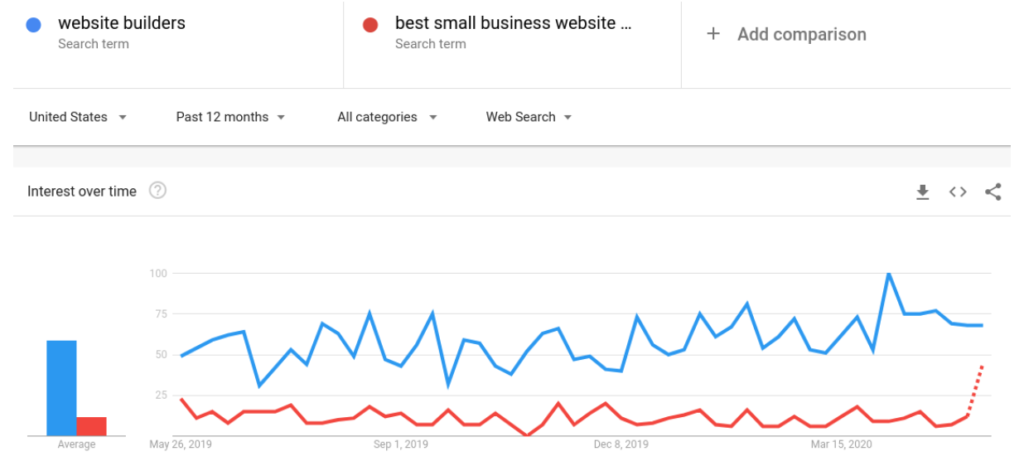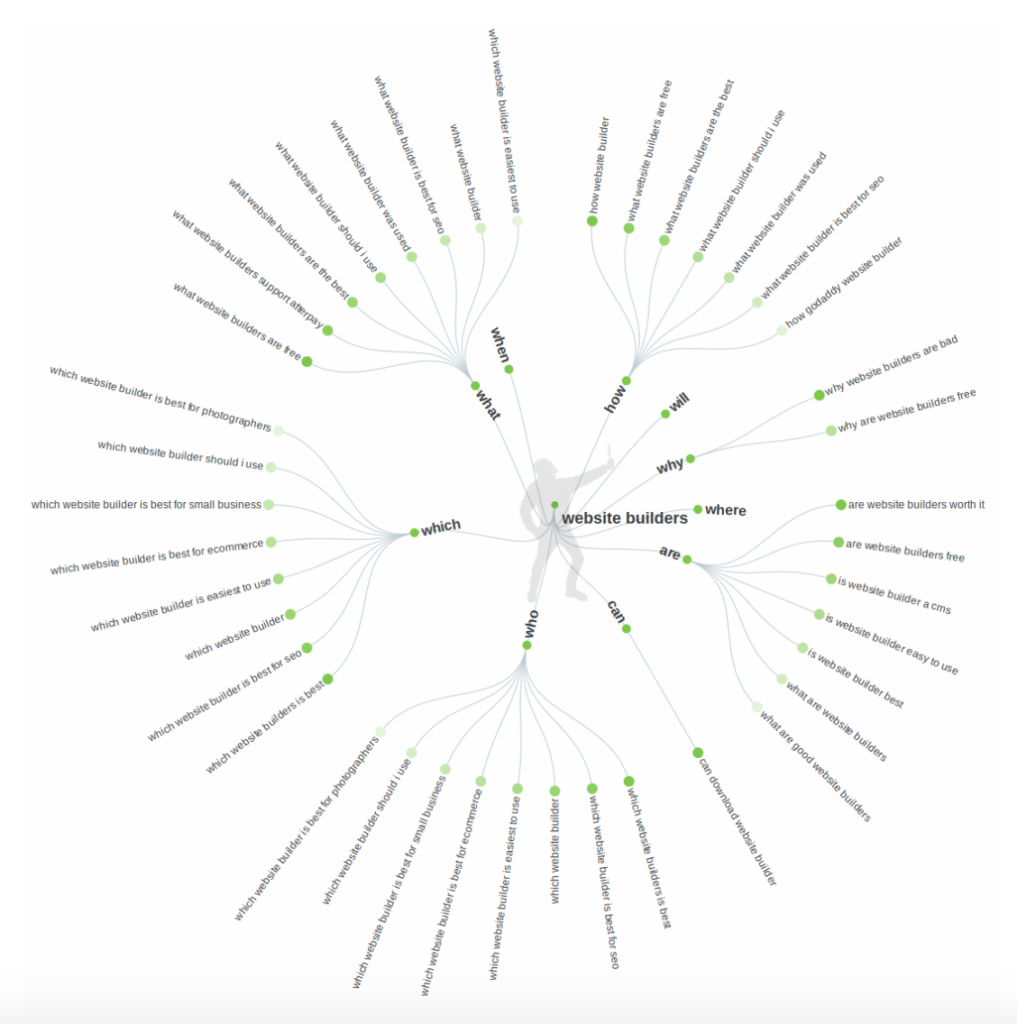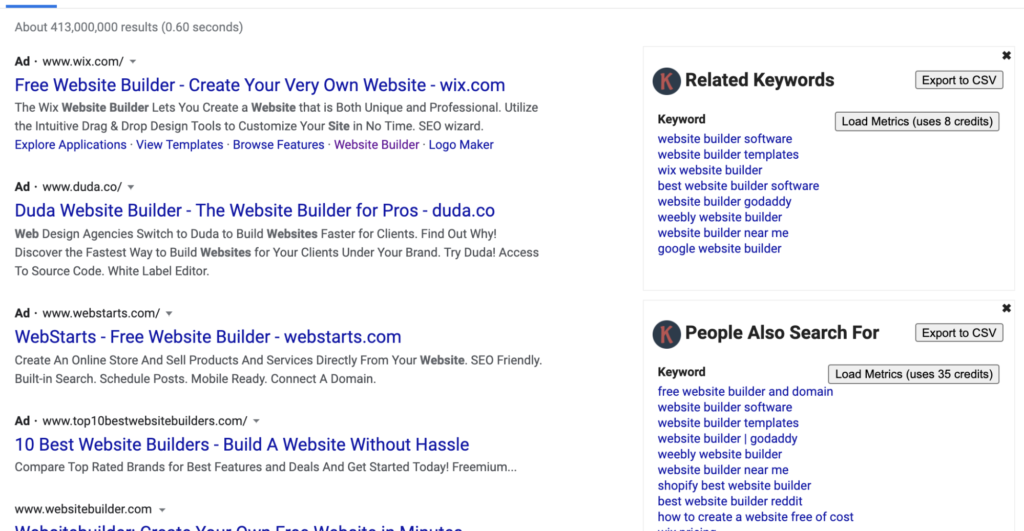Article's Content
What Are Long Tail Keywords?
Long tail keywords are the long search queries that searchers make. These long tail queries are usually made up of at least three to four words and are more descriptive than regular keywords (also called head terms or short tail terms).
Such queries using over three words make up about one third (29.13%) of the searches, as an SEO tool found in its analysis of 1.9 billion keywords with 10,000+ monthly searches.
Realistically, though, many long tail keywords for your business may only have 10-50 monthly searches. But there might be hundreds of such long tail keywords you could optimize for.
The Benefits of Long Tail Keywords
- Long tail keywords (usually) have low search demand (and hence they’re easier to rank for). Though this isn’t always the case, but long tail keywords are usually not as popular as regular keywords. For a crude comparison, just go to Google Trends and input both a head term and a long tail keyphrase and you’ll get an idea. For the sake of this example, let’s say that you’re a website builder solution provider. So your key head term naturally is “website builders” and a long tail for you might look like “best small business website builder” if your target audience makes up of small businesses.


Generally, the popularity of a head term is way more than that of a long tail keyword. It’s like a keyword with 250 or 2500 monthly searches competing with one with a measly 13 searches a month. That’s why many businesses go for head terms — they look at traffic and often miss the long tail ones. They don’t see much value in investing in content that won’t get a decent number of people to the website each month. If this is the case in your niche, you can win all the long tail keywords no one cares about… and build low but steady and quality traffic streams to your website.
- Long tail keywords result in higher conversions. Long tail keywords often hint at buying intent or genuine interest. Long tail searches qualify the searcher as a good lead already. For example, a person looking for the long tail “best small business website builder” or “best AI website builder” is likely a small business owner or a designer working on a small business website. If you can get this person to your website, the chances are high that you’ll get them to subscribe to your tool or at least sign up for a trial. (An SEO tool’s study found that long tail keywords convert at a whopping 36%.)
- Long tail keywords can generate compounding traffic. If you can rank #1 for 300 commercial intent long tail keywords (where each gets 10 monthly searches), you can bring 300 search leads to your website (assuming each searcher clicks your link and lands on your website!). Optimizing for long tail keywords like this surely needs investment for creating multiple content resources, but you won’t have to write very long-form content because the competition tends to be low. Also, sometimes, you’ll just club a bunch of related long tail keywords and write a single resource targeting them all.
Long Tail Keywords Vs. Short Tail Keywords (and Why You Need Both)
To build a balanced SEO content strategy, you need to use a good mix of long tail and short tail keywords because both have their place. If long tail keywords bring you leads then short tail keywords bring high traffic streams and exposure for your brand. Your sales and marketing funnel needs both.
Not just that, long tail keyword resources can actually help you build your authority on the more competitive short tail keywords as well.
Let’s take an example of using both head terms and long tail keywords for good SEO.
So here’s a post that targets the head term “CRO tools.” Since this is a head term in a competitive space, it’s naturally difficult to rank for.


Take a minute and think about the people who search for this term. These are people who are looking for tools to optimize their conversion rates. A huge chunk of these people might be marketers who are just exploring conversion optimization to increase the sales from their companies’ websites. Mostly, they’re just checking stuff out. They don’t necessarily show the intention to buy a CRO tool.
Naturally, a company that makes an optimization tool — such as an A/B testing tool — will want to get exposure and break into this search channel audience. These visitors may not be ready to buy now, but a good fraction of them might at a later time.
Now, look at this post targeting the long tail keyword “client side testing vs server side testing.“


Again, consider the intent of the people who are searching for this long tail keyword. These are likely marketers or people from businesses who already practice conversion optimization and perform A/B tests on the client-side (which is the most common type of A/B testing). They’re now probably looking at the testing that can happen on the server side. Or, they’re people who want to learn if an A/B testing tool they buy needs to support both types of testing.
A company that makes an A/B testing tool will want to appear before these search leads as they know what A/B testing is and will make good leads. They’re solution aware — as in, they know they can run both client-side and server-side testing — and can easily learn about your product from your content piece targeting the keyword.
The first one could have a search demand of a few hundred per month whereas the second one might have about ten people searching for it monthly.
But a company making a testing tool will want to target both.
This company can easily link to its short tail resource from its long tail resource(s). It could add a sentence to its long tail resource like “Not all CRO tools support server-side testing” and link the head term “CRO tools” to its short tail resource. Doing so will increase the short tail piece’s topical dominance.
How Do You Find Long Tail Keywords?
SEO Tools for finding long tail keywords
There are plenty of SEO tools that brands can use to identify relevant yet powerful long tail keywords. Whether you use Moz, Ahrefs, Conductor or Ubersuggest — all of these SEO tools can help you find long tail keywords for your content marketing efforts.
Once you enter your identify the priority keyword, most SEO tools will actually give you a bunch of suggestions of long tail keywords that can also be used to support your phrase.
The biggest benefit for using SEO tools for doing your long tail keyword research is that they give you the search volume for many of these “long tail keywords” and their difficulty levels right. Here’s a great walkthrough video from the team at Ahrefs showing how their tool can be used to uncover long tail keywords opportunities:
LSIGraph is another great long tail keyword research tool that can help you discover long tail keywords for your head terms. Just like the SEO software services mentioned above, LSIGraph also shows you the search volume of the long tail keywords it suggests.


Free tool for finding long tail keywords: Answer The Public
Answer The Public is also a long tail keyword research tool that helps you uncover the most popular questions and search queries for the head term you enter. While you won’t get the search volume for the long tail keyword suggestions from this tool, you’ll get dozens of ideas.


In addition to all these tools for finding long tail keyword ideas, you also have Google’s related searches and (other SERP features) to help you.
The best Free tool for finding long tail keywords: Google’s SERP
Google’s first results page for a head term offers dozens of ideas for popular long tail keywords around it. For example, when you search for the head term “website builders” you see SERP features like:






All of these make excellent ideas for long tail keywords.
Combine this with a plugin like Moz, Ahrefs or Keywords Everywhere and you can quickly get the data around these long tail keywords directly in your browser. Here’s a sample of what your SERP looks like when you do this search but have the SEO Plugin, Keywords Everywhere installed in your browser:


On the right hand side of the SERP you can see “Related Keywords” and “People Also Search For” – If you ‘Load Metrics’ you’re then met with the volume, cost per click, competitive score and trend graph for these phrases:


To suggest that this is an SEO dream would be an understatement. You can use this data to not only gain inspiration but also better understand what long tail keywords are opportunities in the making and that you and your brand can leverage to drive accelerated growth.






